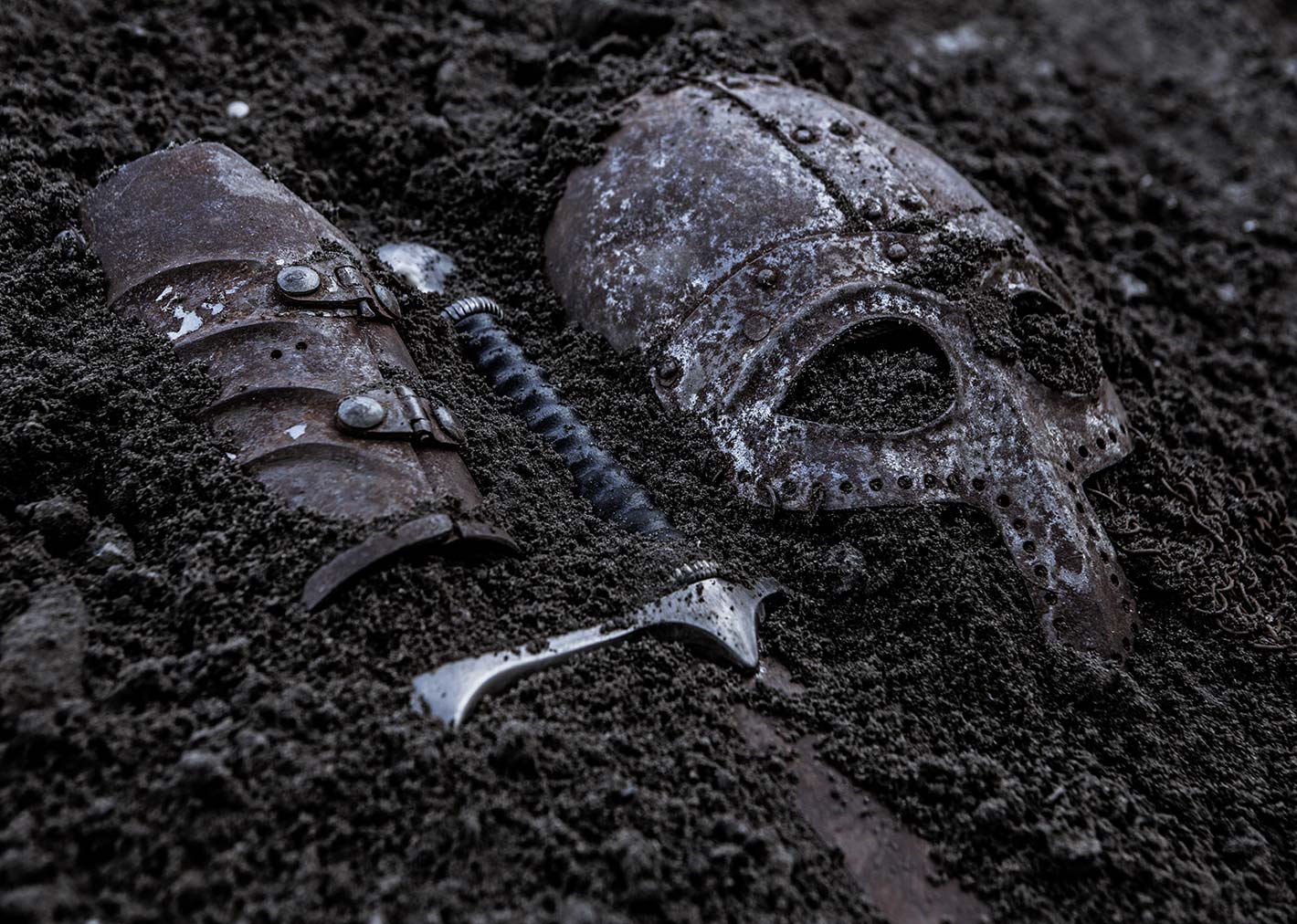You might see yourself having a Viking funeral if you prefer an option other than burial and cremation. Viking funerals were a traditional practice among the ancient Norse people of high status. Although they often appear in popular culture, historians debate their historical accuracy and prevalence. The details of these rituals varied depending on factors such as the individual’s social status, regional customs, and available resources.
Learn more about the history of Viking funeral rituals and how they honored the dead below.
What Is A Viking Funeral?
Viking funeral rituals were an elaborate celebration to honor the dead and provide a dignified passage into the afterlife. Key elements associated with Viking funerals include:
- Cremation
- Burial at sea or on land
- Funeral gatherings and feasts
- Sacrifices
Viking Burial Process
The Viking funeral ritual is a process with many steps. Explore the burial customs of the Vikings below:
Preparation of the body
After death, the Viking body is prepared for the funeral ritual. The dead would get dressed in clean clothing, and the wealthy would be decorated with jewels. Once the body was prepared, it would be placed on a pyre or sometimes a wooden boat.
Cremation
After the body was prepared, the body was then cremated. Although there is some evidence a few very high-ranking individuals were burned in their boats, many more were simply buried in them after the pyre cremation process.
The pyre is a stack of wood or a platform that was built to hold the body. The pyre was often shaped like a ship, representing the deceased’s journey to the afterlife. Sometimes stones were used to construct a more permanent structure.
After the cremation, the ashes filled a ceremonial urn which went into the deceased’s burial mound, along with grave gifts and sacrifices.
Burial at land or sea

Once the body was cremated, the remains within the ceremonial urn were either buried on land or at sea. Most Vikings were buried with the tools and wealth they would need in their next life. In both land and sea burials, Vikings were accompanied with everything they would need for the afterlife, including:
- Small personal objects
- Weapons, like their sword, spear, or shield
- Furniture
- Tools
- Jewelry
- Pottery
Sea burials were very common for Vikings. A ship grave was about as common to Vikings as a specialized memorial chapel is to modern Christian burials.
Not many Vikings needed an entire boat, especially compared to the needs of the living, and so very few earned a seafaring vessel in their grave goods. More often, Vikings had a ship-shaped burial mound. This gave the dead an impression of a ship, and the community didn’t have to sacrifice one of their most valuable assets.
Funeral gatherings and feasts
After the burial, a funeral feast or gathering would be held to honor the memory of the deceased. Family, friends, and the community would come together to share a meal, remember the deceased, and support the grieving family.
Funeral rituals and offerings
The Vikings also took rituals and offerings seriously as part of the burial process. The living had to sacrifice not only the dead’s gold, household goods, and best clothes but frequently the deceased’s pets, horses, and favored servants during the funeral as well.
Many Viking burial mounds include ritually butchered men and enslaved women who helped escort the dead into the great beyond. Other rituals included the recitation of funeral prayers. Typical prayers for the Vikings were Pagan — they would offer their messages to Odin, one of the gods of the afterlife.
Where Did Vikings Go After Death?
The Vikings believed that the dead get sent to the afterlife either through burial or cremation. In Norse mythology, many Vikings that are killed in battle go to Valhalla, which is also known as the “hall of the dead,” ruled by the god Odin. While great warriors may go to Valhalla, it wasn’t the only place a good Viking might end up. A dead Viking may also go to:
- Hel: This refers to the afterlife that is ruled by the goddess of death
- Fólkvangr: Also known as “people field,” this is a meadow in the afterlife where those that die in combat go
- The realm of Ran: This realm is at the bottom of the sea where those who’ve drowned go
It is also believed that rebirth or reincarnation is possible for the dead and that family members stay together in the afterlife and after reincarnation.
Honoring The Passing Of Loved Ones
Since the Vikings did not keep written records, the exact details and variations of the Viking funeral rituals are still subjects of ongoing research and archaeological discoveries. However, what Historians have uncovered from burial mounds and reports throughout history provide interesting insight into how the Vikings honored their dead.
If you’re in the process of planning a funeral, be sure to get a quote now on burial insurance to help reduce the stress of planning.
Choice Mutual often cites third-party websites to provide context and verification for specific claims made in our work. We only link to authoritative websites that are known to provide accurate information. You can learn more about our editorial standards, which guides our mission of delivering factual and impartial content.


